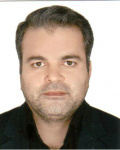| نویسندگان | محمدرضا رضائی,محمد حسین صیادی,پوریا حسین ابادی,حسین بارانی |
|---|---|
| همایش | سومین کنفرانس بین المللی فناوری های نوین در علوم |
| تاریخ برگزاری همایش | 2023-05-18 |
| محل برگزاری همایش | امل |
| شماره صفحات | 0-0 |
| نوع ارائه | پوستر |
| سطح همایش | داخلی |

محمدحسین صیادی
دانشیار
همکار سابق
دانشکده: منابع طبیعی و محیط زیست
گروه: محیط زیست
مقطع تحصیلی: دکترای تخصصی

دانشیار محمدحسین صیادی
همکار سابق
دانشکده: منابع طبیعی و محیط زیست
-
گروه: محیط زیست
مقطع تحصیلی: دکترای تخصصی |